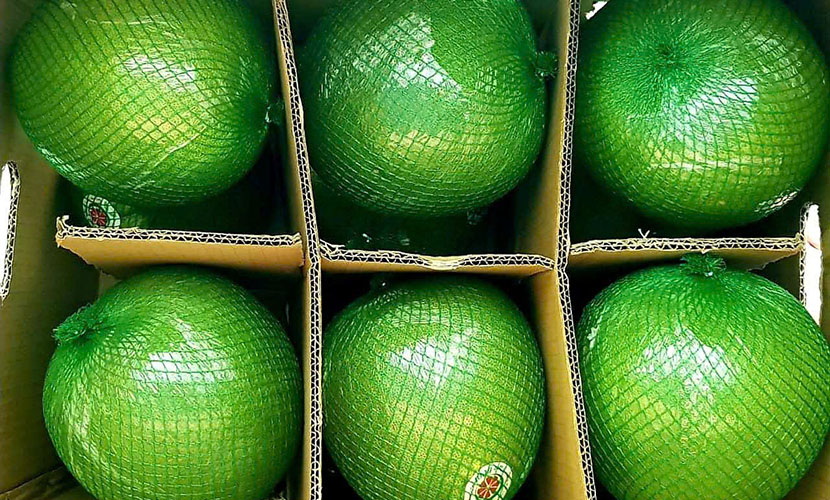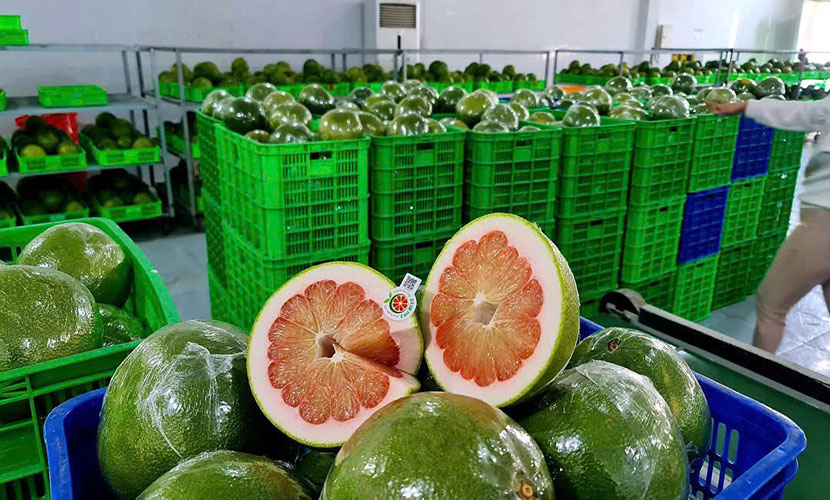
Vietnam’s grapefruit has great opportunities to expand export markets. Specifically, Australia and South Korea have completed the procedures for granting official import licenses for fresh grapefruit.
This is an important step forward for Vietnam’s grapefruit in particular and for Vietnamese fruits in general. Especially, it contributes to increasing the value of Vietnam’s grape fruit with an annual output of nearly one million tons. Simultaneously, it overcomes the situation of “domestic surplus, export shortage” of famous grapefruit varieties.

Vietnam’s grapefruit
Australia completes import negotiations for Vietnamese grapefruit
On May 7th 2025, Australia confirmed that Vietnamese grapefruit is eligible for import. However, to pass the customs, it should comply with pest control measures and plant quarantine procedures.
To protect native ecosystems, Australia recommends a lot of measures. They are pest-free areas, irradiation or methyl bromide treatments and pre-export visual inspection. In particular, for citrus canker, Australia requires the application of a “Systems Approach”. This a series of integrated measures from orchard to post-harvest.
The assessment process was not only based on technical aspects but also consulted with 7 domestic and international organizations. Therefore, it fully reflected the latest data on production and pest management.
However, red spider mites and mealybugs are considered regional quarantine objects in Western Australia. This area requires imported grapefruit to comply with interstate transportation regulations. After the announcement, Australia will conduct final verification and the official conditions will be updated on the system.

Vietnam’s grapefruit factory
South Korea officially issues import licenses for Vietnamese grapefruit
In parallel with Australia, South Korea has officially licensed the import of Vietnam’s grapefruit, marking the third fresh fruit (after dragon fruit and mango) allowed into this market. This is the result of two years of negotiations since 2018, with technical consensus reached in a bilateral meeting in April 2024.
However, to enter into South Korea, Vietnamese grapefruit should follow strict quarantine requirements. They include growing area registration, heat treatment, and testing of 2% of cartons or 600 fruits per shipment.
The opening of the Korean market, with a population of 50 million, opens up great opportunities for Vietnamese grapefruit. Currently, Vietnam’s grapefruit is already present in 13 countries and territories, including the United States, Canada, New Zealand, Germany, the Netherlands, the UAE, Hong Kong, and Norway. China leads with more than 50% of export turnover. The United States and South Korea rank the second, but the export volumes are still modest, about 5,000 tons per year.
The area under grapefruit cultivation in Vietnam has doubled in the past five years, from 50,000 hectares in 2015 to more than 100,000 hectares in 2025. Accordingly, it generates an annual output of nearly one million tons. Grapefruit varieties such as Da Xanh, Nam Roi, Dien and Tan Lac have affirmed their quality in demanding markets such as the EU and Japan. However, export output remains low due to limitations in technical standards, preservation technology, and domestic surplus.

Loading Vietnam’s grapefruit
The opening of markets by Australia and South Korea will increases consumption opportunities for Vietnam’s grapefruit. Also, it encourages the Vietnamese grapefruit industry to improve quality and comply with international standards.
According to an estimate, the number of countries importing Vietnamese grapefruit may increase to 14 by the end of 2025. Therefore, the industry needs to focus on developing growing areas that meet Globalgap standards. Along with that, it is necessary for improving farming skills and building a chain linking farmers to businesses to meet the strict requirements of new markets.
Vietnamese sources: https://baochinhphu.vn/buoi-viet-nam-mo-rong-thi-truong-xuat-khau-102250508085440645.htm
